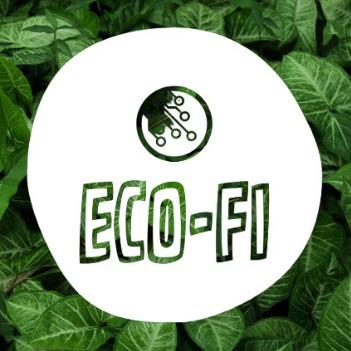Eco-Fi
Empowering Eco-conscious DeFI.
The problem Eco-Fi solves
EcoFI provides an opportunity for citizens of India to tackle climate change and support underprivileged communities. By purchasing ERC721 NFTs representing real-world objects like trees, solar panels, and windmills, individuals can directly contribute to climate change mitigation efforts. These sustainable investments help initiatives such as reforestation, renewable energy adoption, and carbon reduction projects.The DApp ensures that the cryptocurrency used for purchasing NFTs is transferred to NGOs. These NGOs utilize the funds to improve the livelihoods of marginalized populations by providing clean water, education, healthcare, and livelihood opportunities.
How does Eco-Fi tackle them:
In line with the United Nations Sustainable Development Goals (UN SDGs), our decentralised application (DApp) satisfies the urgent demand for NFT staking to promote social and environmental impact.
This is how it operates:
- Minting NFT: Users are prompted to mint a free ERC1155 NFT upon connecting. The "Guardian Angel," a figure depicted in this NFT, symbolises their responsibility for preserving and enhancing the environment.
- Donation Page: After that, users are taken to a marketplace where ERC721 NFTs—which stand in for actual things like trees, solar panels, windmills, books, and clothing—are posted.
3.Significant Transactions: The cryptocurrency utilised in a transaction to purchase an ERC721 NFT from the marketplace is donated to a pre-approved non-governmental organisation (NGO). The NGO uses these funding to start concrete projects that are in line with the UN SDGs, including solar panel installation or tree planting.
4.Staking for Rewards:Users actively support the expansion and longevity of the ecosystem by staking their NFTs to receive incentives in the form of ERC-20 tokens, which motivates them to keep up their good work.
Challenges we ran into
- User Experience: Ensuring a smooth and intuitive user experience, especially for non-technical users interacting with web3 wallets and blockchain transactions. Providing clear instructions and error-handling mechanisms.
- Integration with Web3 Providers: Integrating with various Web3 providers (e.g., MetaMask) and handling different blockchain networks (e.g., Ethereum mainnet, testnets) can be complex. Ensuring compatibility across different providers and networks is important for broad user accessibility.
- Creating smart contracts for minting ERC1155 NFTs, managing the shop and ERC721 NFTs, handling transactions, staking, and distributing ERC20 rewards requires advanced knowledge of Solidity and understanding of Ethereum's smart contract development best practices.
- Finding a way to integrate blockchain such that it solves and aligns with United Nations Sustainable Development Goals (SDG).
Tracks Applied (2)
Polygon Track
Polygon
Ethereum Track
ETHIndia
